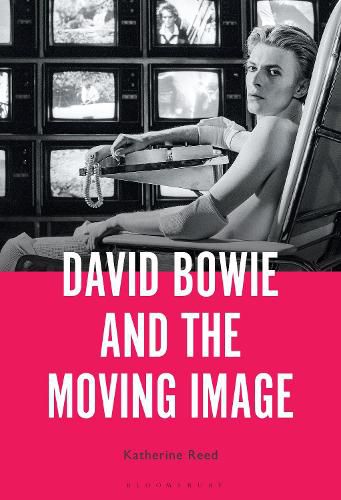Readings Newsletter
Become a Readings Member to make your shopping experience even easier.
Sign in or sign up for free!
You’re not far away from qualifying for FREE standard shipping within Australia
You’ve qualified for FREE standard shipping within Australia
The cart is loading…






The central image of David Bowie’s Life on Mars? could have been ripped from his own experience: a child (with their mousy hair ) sits hooked to the silver screen, reliving fantastical scenes played out on film over and over again. Throughout his life, Bowie was similarly transfixed by the power of film and might be best known among younger generations for his turn on the silver screen as Jareth, the goblin king of Jim Henson’s Labyrinth. From his first film role in The Image to his final music video before his death, Lazarus, Bowie’s musical output has long been intrinsically linked to images.
Despite this relationship to film, Bowie’s audio-visual work remains relatively unexplored. More narrowly focused studies address the artist’s music videos or film roles, but none provide a comprehensive view of the two-way street that was Bowie’s work with film, theorizing the way he engaged with the medium throughout his 50-year career. David Bowie and the Moving Image is just such a comprehensive study. Analyzing Bowie’s music videos, planned film projects, acting roles, and musical works included in films, this monograph provides an intervention in Bowie scholarship. This study of Bowie’s multimedia projects informs our understanding of all areas of his work, from music to fashion to visual art. It enters the debate about Bowie’s artistic legacy and fills an important gap by addressing Bowie as musician, actor, and auteur.
$9.00 standard shipping within Australia
FREE standard shipping within Australia for orders over $100.00
Express & International shipping calculated at checkout
The central image of David Bowie’s Life on Mars? could have been ripped from his own experience: a child (with their mousy hair ) sits hooked to the silver screen, reliving fantastical scenes played out on film over and over again. Throughout his life, Bowie was similarly transfixed by the power of film and might be best known among younger generations for his turn on the silver screen as Jareth, the goblin king of Jim Henson’s Labyrinth. From his first film role in The Image to his final music video before his death, Lazarus, Bowie’s musical output has long been intrinsically linked to images.
Despite this relationship to film, Bowie’s audio-visual work remains relatively unexplored. More narrowly focused studies address the artist’s music videos or film roles, but none provide a comprehensive view of the two-way street that was Bowie’s work with film, theorizing the way he engaged with the medium throughout his 50-year career. David Bowie and the Moving Image is just such a comprehensive study. Analyzing Bowie’s music videos, planned film projects, acting roles, and musical works included in films, this monograph provides an intervention in Bowie scholarship. This study of Bowie’s multimedia projects informs our understanding of all areas of his work, from music to fashion to visual art. It enters the debate about Bowie’s artistic legacy and fills an important gap by addressing Bowie as musician, actor, and auteur.